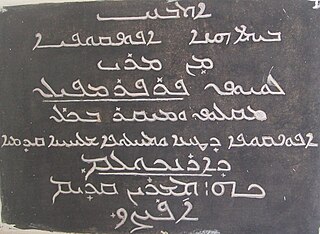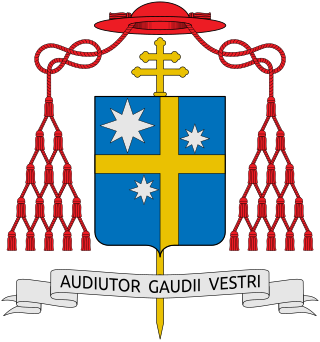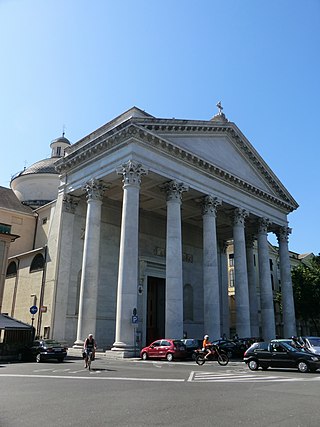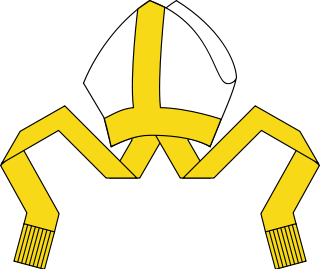Related Research Articles

The Archdiocese of Manila is the archdiocese of the Latin Church of the Catholic Church in Metro Manila, Philippines, encompassing the cities of Manila, Makati, San Juan, Mandaluyong, and Pasay. Its cathedral is the Minor Basilica and Metropolitan Cathedral of the Immaculate Conception, also known as the Manila Cathedral, located in Intramuros, which comprises the old city of Manila. The Blessed Virgin Mary, under the title Immaculate Conception, is the principal patroness of the archdiocese.

Gaudencio Borbón Rosales is a Filipino Roman Catholic Cardinal who was Archbishop of Manila, succeeding Jaime Sin in 2003, and succeeded by Luis Antonio Tagle in 2011. Being the Metropolitan of the ecclesiastical province of Manila, he was the 31st archbishop of Manila and the fourth native Filipino to hold the post, following centuries of Spanish, American, and Irish prelates. During his last year as archbishop, he was concurrently named apostolic administrator of the Diocese of Pasig from December 21, 2010, to April 20, 2011, a post he accepted after the resignation of Pasig's first bishop, Francisco San Diego.

The Major Archeparchy of Ernakulam–Angamaly is the major archeparchy and the See of the Major Archbishop of the Syro-Malabar Major Archiepiscopal Church. Mar Cardinal George Alencherry is the present Major Archbishop, and until July 2022 Archbishop Mar Antony Kariyil CMI was the Vicar of Major Archbishop, responsible for the administration of the major archeparchy. Currently Mar Andrews Thazath, Archbishop of Thrissur Archeparchy, was appointed by the Holy Father Pope Francis as the apostolic administrator of the same, replacing Mar Antony Kariyil. The Syro-Malabar Catholic Church was elevated to the status of a major archiepiscopal church in 1992 with Ernakulam-Angamaly as the primatal see.
Pio Taofinuʻu, S.M. was a Catholic cardinal and Archbishop of Samoa-Apia. Born in the village of Falealupo on the island of Savai'i in Samoa, he was the first Polynesian bishop and cardinal. He was made a Cardinal by Pope Paul VI in the Consistory of 5 March 1973, of the Title of St. Onofrio. His father was Taofinuʻu Solomona and his mother, Mau.

The Roman Catholic Diocese of Pinerolo is a Latin rite bishopric in the administrative province of Turin of Piedmont region, Northwestern Italy. It is a suffragan of the Metropolitan archbishopric of Turin.

Giovanni Saldarini was an Italian Cardinal and Archbishop of Turin.

Elia Dalla Costa was an Italian Roman Catholic prelate and cardinal who served as the Archbishop of Florence from 1931 until his death. Dalla Costa served as the Bishop of Padua from 1923 until 1931 when he was transferred to Florence; he was elevated to the cardinalate on 13 March 1933. Dalla Costa was a staunch anti-fascist and anti-communist and was known best for providing refuge for Jewish people during World War II and providing others with fake documentation to flee from persecution.

Michele Pellegrino was an Italian cardinal of the Roman Catholic Church who served as Archbishop of Turin from 1965 until 1977.

Andrea Ferrari – later adopting the middle name "Carlo" – was an Italian Catholic prelate who served as a cardinal and as the Archbishop of Milan from 1894 until his death. Ferrari was a well-regarded pastor and theologian who led two dioceses before being appointed to the prestigious Milanese archdiocese which he led until his death. But he was later accused of Modernism which led to a strained relationship with Pope Pius X who finally reconciled with Ferrari in 1912.

Karl Kajetan von Gaisruck was an Austrian Cardinal and the archbishop of Milan from 1816 to 1846. He also held the title of Graf or Count.

The Diocese of Biella is a Roman Catholic ecclesiastical territory in northern Italy, in the Piedmont region. The diocese was established in 1772. It is a suffragan of the Archdiocese of Vercelli. Biella is a city in Piedmont, 42km northwest of Vercelli.

The Diocese of Chiavari is a Roman Catholic ecclesiastical territory in Liguria, northern Italy. It was created on 3 December 1892 by Pope Leo XIII in the Bull Romani Pontifices. It is a suffragan of the Archdiocese of Genoa.

Giovanni Battista Scalabrini is an Italian Roman Catholic saint, canonized in 2022, who served as Bishop of Piacenza from 1876 until his death. He was the founder of both the Missionaries of Saint Charles and the Mission Sisters of Saint Charles.

Cesare Nosiglia is an Italian prelate of the Catholic Church was the Archbishop of Turin from 2010 to 2022. He has been a bishop since 1991, serving first as an auxiliary bishop of Rome, vicegerent of Rome with the title of archbishop from 1996 to 2003, and then Archbishop-Bishop of Vicenza from 2003 to 2010.

Raymond Emil Goedert is an American prelate of the Roman Catholic Church. Goedert served as an auxiliary bishop of the Archdiocese of Chicago in Illinois from 1991 to 2003.

Alberto Suárez Inda is a Mexican prelate of the Roman Catholic Church. He served as Archbishop of Morelia from 1995 to 2016.
Clemente Marchisio was an Italian Roman Catholic priest who served as a parish priest in the Archdiocese of Turin. Marchisio served as an assistant priest before travelling across Italian cities as word of his mission and holiness spread. In the spirit of evangelical and devotional zeal he established the Daughters of Saint Joseph of Rivalba to suit the religious needs of females. The order had an emphasis on the Eucharist and on Saint Joseph himself.
Adolfo Barberis was an Italian Roman Catholic priest and the founder of the Sisters of Christian Servanthood. Barberis served as the assistant to the Archbishop of Turin from 1906 until the cardinal's death in 1923 at which point he worked for sometime as a professor. He did this while managing the functions of the religious congregation he established which he had dedicated to the education and care of domestic women. The consequences of World War I were enough to convince him to found an order to help women though he often faced difficulties in dealing with Cardinal Maurilio Fossati in the beginning of the latter's tenure as Archbishop of Turin. These disagreements came due to Fossati's limited knowledge of Barberis' work and the slander levelled against him sometime before that. This slander came in 1923 after his cardinal benefactor died as some fellow priests suggested he garnered too much power in his position.

Francesco Fasola was an Italian member of the Congregatio Oblatorum Sanctorum Gaudentii et Caroli Novariae who served as the Archbishop of Messina from 1963 until his retirement in 1977. He served as a rector and parish priest after his ordination in Galliante before he was made a bishop in 1954 for the Agrigento diocese where he served as the coadjutor; he later was moved south to Caltagirone and then was made an archbishop. Fasola placed a particular emphasis during his episcopate on the renovation of ecclesial buildings and the ordination of new priests which was a sacrament he liked to bestow upon seminarians.
Franco Maria Giuseppe Agnesi is an Italian Catholic bishop, Auxiliary Bishop of Milan since 24 May 2014.
References
- 1 2 3 4 5 6 7 8 9 "Mons. Pinardi: uomo di Dio". Archived from the original on 25 May 2016. Retrieved 18 May 2019.
- 1 2 3 4 5 6 Pier Giuseppe Accornero (16 May 2019). "Mons. Giovanni Battista Pinardi è venerabile". La Voce e il Tempo. Retrieved 18 May 2019.
- 1 2 3 4 5 6 7 "Venerabile Giovanni Battista Pinardi". Santi e Beati. Retrieved 18 May 2019.